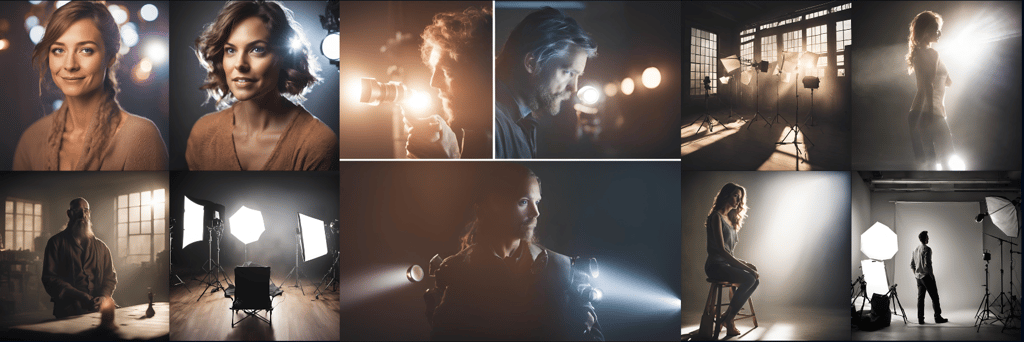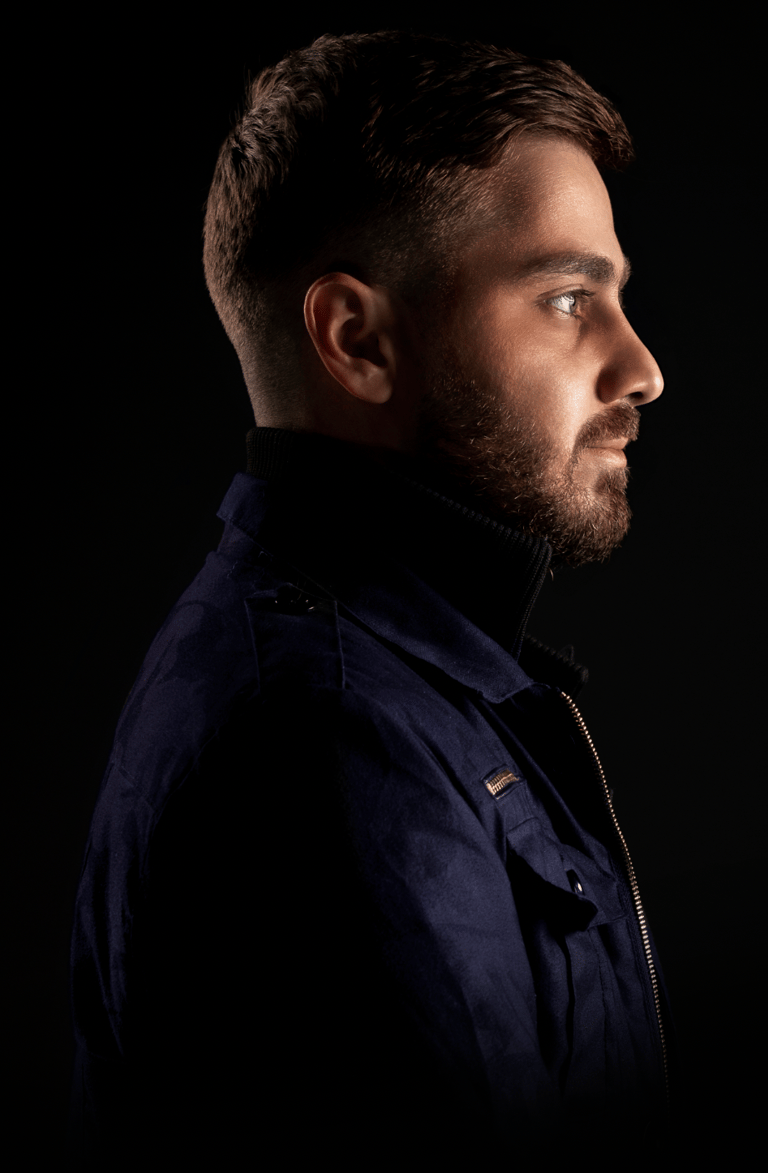The Orchestra of Storytelling: Film Production Departments
Imagine a bustling film set: Storytelling ,cameras capture every detail, and a complex web of activity unfolds behind the scenes. Each department, from the bustling pre-production phase to the meticulous post-production process, plays a vital role in transforming a script into a captivating cinematic experience. This comprehensive guide delves into the world of film production departments, explaining the roles and responsibilities of the talented individuals who bring stories to life on screen.
saleh ammar
2/14/20249 min read
Pre-Production: Laying the Foundation
Development: This department is responsible for identifying and acquiring potential stories. They may source scripts from writers, develop original ideas, or acquire film rights to existing properties. Key roles include:
Development Executive: Oversees the development process, identifies promising projects, and manages budgets.
Script Reader: Analyzes scripts and provides feedback to development executives.
Story Editor: Works with writers to refine scripts and ensure they are cohesive and engaging.
Production: Once a script is greenlit (approved for production), the production department takes center stage. They handle the logistical aspects of filmmaking, including budgeting, scheduling, and securing locations. Key roles include:
Producer: The overall leader of the production, overseeing all aspects from development to distribution.
Line Producer: Manages the day-to-day operations of the production, ensuring everything runs smoothly within budget and schedule.
Production Manager: Provides logistical support for the line producer, handling tasks like hiring crew members and securing permits.
Production Coordinator: Assists the production manager with daily tasks and keeps track of paperwork and communication.
Location Manager: Secures filming locations, obtains permits, and coordinates logistics with location owners.
Casting: This department finds the perfect actors to bring the characters in the script to life. Key roles include:
Casting Director: Leads the casting process, identifies potential actors, and conducts auditions.
Casting Associate: Assists the casting director with research, scheduling auditions, and preparing actors.
Pre-Production Meeting: Various departments come together to discuss the script, storyboard scenes, finalize locations, and ensure everyone is on the same page.
Production: Bringing the Script to Life
Directing: The director is the creative leader on set, interpreting the script and guiding the actors and crew members to achieve the desired vision. Key roles include:
Director: Oversees all aspects of the production on set, from directing actors to collaborating with the DP on visuals.
Assistant Director (AD): Supports the director, manages the daily shooting schedule, and ensures the set runs efficiently.
Script Supervisor: Ensures continuity throughout filming, keeping track of script changes and takes.
Camera Department: Capturing the Director's Vision
This department is responsible for capturing the film's visuals through camera operation, lighting, and grip equipment. Their goal is to translate the director's vision and the script's emotional core into a compelling visual language. Key roles include:
Director of Photography (DP): Collaborates with the director to create the film's visual style. The DP makes crucial decisions about lighting setups, camera angles, lens choices, and camera movement to achieve the desired mood, atmosphere, and emotional impact for each scene.
Camera Operator: Operates the camera according to the DP's instructions and shot list, ensuring smooth and precise camera movements.
Focus Puller: Ensures the subject remains in sharp focus throughout filming, adjusting the focus ring on the camera lens as needed.
Assistant Camera (AC): Assists the camera operator with various tasks, such as loading film (in film productions) or changing memory cards (in digital productions), maintaining camera logs, and preparing for upcoming shots.
Digital Imaging Technician (DIT): (in digital productions) Manages the digital workflow on set, ensuring the captured footage is properly backed up and color-calibrated.
Lighting Department: Painting with Light
The lighting department works closely with the DP to create the desired lighting setups for each scene. They use various lighting equipment and techniques to manipulate light, cast shadows, and create specific moods and atmospheres. Key roles include:
Gaffer: The head electrician, oversees the lighting setup on set and works with the DP to achieve the desired visual effects. They create lighting plans, communicate with the grip department to position lights, and ensure the electrical safety of the set.
Best Boy Electric (BBE): The gaffer's right-hand person, assists with managing the electrical department and ensuring all lighting equipment functions properly.
Electrician: Sets up and maintains lighting equipment, following the gaffer.
Grip Department: Building the Framework for Cinematography
The grip department works hand-in-hand with the camera department to provide the physical support and equipment needed for camera movement and positioning. They are responsible for the safe and efficient setup and operation of various camera rigs and dollies. Key roles include:
Key Grip: The head grip, oversees the grip department and collaborates with the DP and camera operator to determine the necessary camera rigs and movements for each shot. They create grip plans outlining equipment placement and ensure the safety of crew members working with camera rigs.
Grips: Set up and operate various grip equipment, including:
Dollys: Tracks with wheels that allow for smooth camera movement along the ground.
Cranes: Large cranes that can elevate the camera for high-angle shots or sweeping panoramic movements.
Jibs: Smaller, arm-like cranes that offer more flexible camera positioning compared to full cranes.
Steadicams: Stabilizing systems worn by an operator that allow for smooth handheld camerawork.
Flags: Fabric panels used to control light spill and create shadows.
Apple boxes and stands: Platforms used to elevate the camera or crew members for specific shots.
Camera Department: A Collaborative Symphony
While each member of the camera department has a specific role, effective communication and collaboration are crucial for success. The DP works closely with the director to translate the vision into a visual language. The camera operator communicates with the focus puller to ensure sharp images, while the AC keeps everyone organized and prepared for the next shot. The DIT (in digital productions) ensures the captured footage is properly stored and ready for post-production color grading.
Beyond the Essential Crew: Additional Camera Department Roles
Depending on the size and complexity of the production, the camera department may include additional roles:
Video Assist (VA): Operates a separate monitor that displays the live camera feed, allowing the director and other crew members to review the shot in real-time.
Camera Loader (Film Productions Only): Loads film canisters into the camera magazine before filming and unloads them afterward for processing.
Drone Operator: Pilots a drone equipped with a camera to capture aerial shots. (Drone use requires specific regulations and permits.)
Conclusion: A Visual Tapestry
The camera and lighting departments play a vital role in shaping the visual language of a film. By collaborating effectively and utilizing their expertise, they transform the director's vision and the script's emotional core into captivating images that draw audiences into the story. From the meticulous planning of the DP to the precise execution of the camera operator and the artistry of the lighting crew, each member of these departments contributes significantly to the magic of filmmaking.



Sound Department:
Captures and manages the film's audio elements. Key roles include:
Production Sound Mixer: Records the dialogue, sound effects, and ambient sound during filming.
Boom Operator: Manages the microphone boom, ensuring clear audio capture for dialogue.
Sound Designer: Creates and manipulates sound effects in post-production to enhance the film's atmosphere.
Art Department:
Designs and creates the visual world of the film, including sets, props, costumes, and makeup. Key roles include:
Production Designer: Collaborates with the director to develop the film's overall visual aesthetic and oversees all aspects of the art department.
Set Designer: Designs the physical sets where filming takes place.
Set Decorator: Furnishes and dresses the sets with props, furniture, and other elements to create a realistic and visually appealing environment.
Costume Designer: Designs the costumes for the actors, ensuring they are visually consistent with the film's setting and character personalities.
Makeup Artist: Applies makeup to the actors to transform their appearance and enhance their characters.
Wardrobe Department:
Manages the costumes worn by the actors throughout filming. Key roles include:
Costume Supervisor: Oversees the wardrobe department, ensuring actors have the right costumes for each scene.
Costume Assistant: Assists the costume supervisor with tasks like preparing and maintaining costumes.
Hair Department:
Styles the actors' hair for each scene to ensure continuity and match the character's style. Key roles include:
Key Hairstylist: Leads the hair department and styles the actors' hair according to the script and character descriptions.
Hairstylist Assistant: Assists the key hairstylist with tasks like preparing hairdressing tools and maintaining hygiene standards.
Stunts Department:
Responsible for choreographing and performing stunts safely. Key roles include:
Stunt Coordinator: Designs and oversees the execution of stunts, ensuring safety for the actors and stunt performers.
Stunt Performer: Trained professionals who perform the stunts in place of the actors.
Special Effects (SFX) Department:
Creates physical special effects, such as explosions, pyrotechnics, and practical creature effects. Key roles include:
Special Effects Supervisor: Oversees the creation and execution of physical special effects.
Special Effects Technician: Constructs and operates the physical special effects elements.
Visual Effects (VFX) Department:
While VFX is typically a post-production role, some planning and pre-production work might be involved, such as green screen setup or motion capture.
Continuity:
The continuity department ensures consistency throughout filming, maintaining details like wardrobe, hairstyles, and set dressings across takes and scenes. Key roles include:
Script Supervisor:
(mentioned earlier) Plays a crucial role in continuity by keeping track of script changes, takes, and ensuring details remain consistent.




Post-Production: Weaving the Magic
The following departments work their magic to transform the raw footage into a cohesive and polished film:
Editing: The editor assembles the film's footage into a cohesive and engaging narrative. Key roles include:
Editor: Selects and arranges the footage, adding transitions, sound effects, and music to create the final film.
Assistant Editor: Assists the editor with tasks like organizing footage, preparing edits, and managing the editing workflow.
Color Grading: The colorist adjusts the film's color palette to enhance the mood and visual style. Key roles include:
Colorist: Uses color grading software to manipulate the film's color tones, saturation, and contrast.
Sound Editing and Mixing: Sound editors and mixers refine the film's sound design by manipulating dialogue, sound effects, and music to create a cohesive audio experience. Key roles include:
Sound Editor: Edits and manipulates sound effects and dialogue to ensure clarity and emotional impact.
Dialogue Editor: Focuses specifically on cleaning up dialogue recordings and ensuring consistent audio quality.
Re-recording Mixer: Mixes the film's dialogue, sound effects, and music to create a balanced and immersive soundscape.
Music Composition: The composer creates the film's score, the original music that underpins the narrative and enhances the emotional impact of the scenes. Key roles include:
Composer: Writes and records the film's score.
Music Supervisor: Oversees the music department, selecting music for specific scenes and collaborating with the composer.


Marketing and Distribution: Bringing the Film to the Audience
Once the film is complete, the marketing and distribution team works tirelessly to get the film seen by audiences. Key roles include:
Marketing Director: Develops and implements marketing campaigns to promote the film. This may involve creating trailers, designing posters, coordinating social media campaigns, and generating media buzz.
Public Relations (PR) Representative: Manages the film's public image, securing positive press coverage and interviews with the cast and crew.
Distribution Manager: Secures distribution deals with theaters, streaming services, and other platforms to release the film to the public. This may involve film festivals, theatrical releases, home video releases, and digital distribution deals.


Conclusion: A Collaborative Symphony
Filmmaking is a complex and collaborative endeavor. Each department, from development to distribution, plays a vital role in transforming a script into a captivating cinematic experience. By understanding the unique functions and responsibilities of each department, you gain a deeper appreciation for the intricate dance that transforms words on a page into a film that can move, inspire, and entertain audiences worldwide.
Whether you're aspiring to enter the film industry or simply want to appreciate the artistry behind your favorite movies, understanding the various production departments empowers you to see the film not just as a finished product, but as a collaborative tapestry woven by a multitude of talented individuals.
Additional Notes:
This guide provides a general overview of film production departments. The specific roles and responsibilities may vary depending on the size and budget of the production.
New technologies and filmmaking techniques continue to emerge, potentially leading to the creation of new departments or the evolution of existing ones.


As Director of Photography and Photographer based in Dubai , I have been in the industry for over 13 years in various roles. Day to day, I work on a number of different productions: documentaries, TV commercials, corporate videos, narrative shorts, tv programs...etc.
incorporated my background in film theory with my field experience as a DOP. I strive to create beautiful imagery that represents a perspective and is distinct. I am here to help formulate your visual language through the means of cinematography using composition, movement, light and shadows, colors, shapes , and dimensions. I believe every film deserves its own unique visual language.
I worked with all types of Cameras and film production equipment and I'm licensed underwater cinematographer with TDI technical diving license
About me




